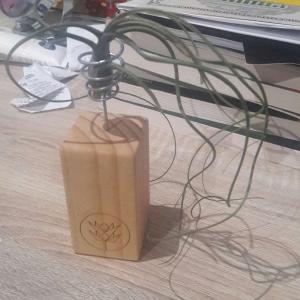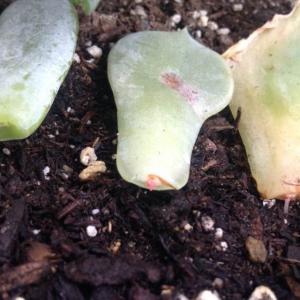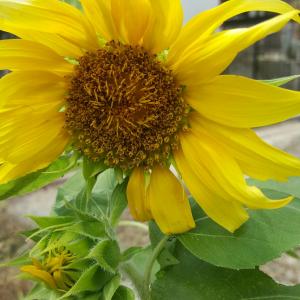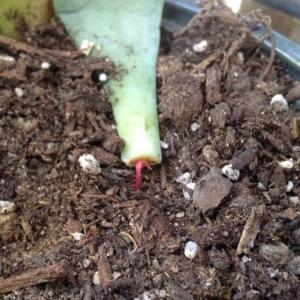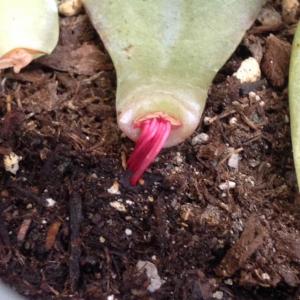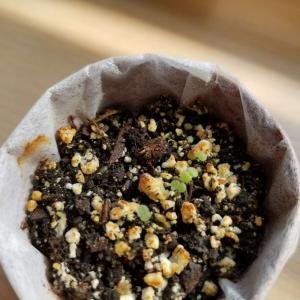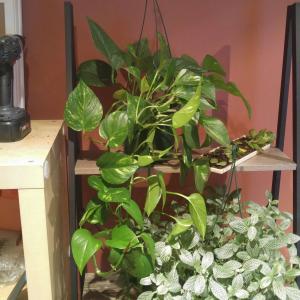文章
Dummer. ゛☀
2017年09月25日

Scientific Name
Coreopsis tinctoria Nutt.

Common Names
Plains Coreopsis, Annual Coreopsis, Golden Tickseed, Painted Tickseed, Calliopsis, Garden Tickseed, Goldenwave
Synonyms
Calliopsis cardaminifolia, Coreopsis cardaminifolia
Scientific Classification
Family: Asteraceae
Subfamily: Asteroideae
Tribe: Coreopsideae
Genus: Coreopsis

Flower
Color: Yellow and maroon or brown
Bloom Time: Mid-summer
Description
Coreopsis tinctoria is an annual plants, up to 4 feet (1.2 m) tall and up to 18 inches (46 cm) wide, with smooth, stiff, branching stems. Leaves are pinnately-divided, glabrous and tending to thin at the top of the plant, up to 3 inches (7.5 cm) long. Flowers are brilliant yellow with maroon or brown centers of various sizes, up to 2 inches (5 cm) in diameter. Flowering typically occurs in mid-summer. The small, slender seeds germinate in fall or early spring.

How to Grow and Care
Most varieties are very easy to grow and are not particular about soil quality or soil pH. Many can be grown from seed, either started indoors, 4-6 weeks before your last expected frost, or direct seeded outdoors. Many will seed themselves, however the hybrid varieties do not grow true to seed.
Coreopsis will need regular water when first planted, until they are established. After that, they are quite drought tolerant.
Deadheading will keep the plants blooming throughout the summer. Some of the smaller flowered varieties are difficult to deadhead and you may prefer to shear the plants, once the first flush of flowers fade. They will fill in quickly.
Most Coreopsis plants will form tidy clumps, but some of the taller species may require staking to look attractive, especially if grown in partial shade.
Although they are rugged plants, they don’t tend to live more than 3 to 5 years. A decrease in flowering is a signal it is time to divide the plants or plant some new ones from seed.
Origin
Native to Canada, Northeast Mexico, much of the United States.
Coreopsis tinctoria Nutt.

Common Names
Plains Coreopsis, Annual Coreopsis, Golden Tickseed, Painted Tickseed, Calliopsis, Garden Tickseed, Goldenwave
Synonyms
Calliopsis cardaminifolia, Coreopsis cardaminifolia
Scientific Classification
Family: Asteraceae
Subfamily: Asteroideae
Tribe: Coreopsideae
Genus: Coreopsis

Flower
Color: Yellow and maroon or brown
Bloom Time: Mid-summer
Description
Coreopsis tinctoria is an annual plants, up to 4 feet (1.2 m) tall and up to 18 inches (46 cm) wide, with smooth, stiff, branching stems. Leaves are pinnately-divided, glabrous and tending to thin at the top of the plant, up to 3 inches (7.5 cm) long. Flowers are brilliant yellow with maroon or brown centers of various sizes, up to 2 inches (5 cm) in diameter. Flowering typically occurs in mid-summer. The small, slender seeds germinate in fall or early spring.

How to Grow and Care
Most varieties are very easy to grow and are not particular about soil quality or soil pH. Many can be grown from seed, either started indoors, 4-6 weeks before your last expected frost, or direct seeded outdoors. Many will seed themselves, however the hybrid varieties do not grow true to seed.
Coreopsis will need regular water when first planted, until they are established. After that, they are quite drought tolerant.
Deadheading will keep the plants blooming throughout the summer. Some of the smaller flowered varieties are difficult to deadhead and you may prefer to shear the plants, once the first flush of flowers fade. They will fill in quickly.
Most Coreopsis plants will form tidy clumps, but some of the taller species may require staking to look attractive, especially if grown in partial shade.
Although they are rugged plants, they don’t tend to live more than 3 to 5 years. A decrease in flowering is a signal it is time to divide the plants or plant some new ones from seed.
Origin
Native to Canada, Northeast Mexico, much of the United States.
1
1
文章
Dummer. ゛☀
2017年09月25日

Scientific Name
Calendula officinalis L.

Common Names
Marigold, Common Marigold, Pot Marigold, Garden Marigold, English Marigold, Scottish Marigold, Ruddles
Synonyms
Calendula aurantiaca, Calendula eriocarpa, Calendula hydruntina, Calendula officinalis var. officinalis, Caltha officinalis
Scientific Classification
Family: Asteraceae
Subfamily: Asteroideae
Tribe: Calenduleae
Genus: Calendula

Flower
Color: Orange or yellow
Bloom Time: June to November
Description
Calendula officinalis is a short-lived aromatic herbaceous perennial, up to 30 in (76 cm) tall with bright green leaves about 4 inches (10 cm) long. The upper leaves are lance shaped with pointed tips and the lower leaves are oval with a rounded tip. The flowers held on thick sturdy stems and are up to 3 inches (7.5 cm) in diameter. The inflorescences are orange or yellow, comprising a thick capitulum or flowerhead up to 3 inches (7.5 cm) in diameter, surrounded by two rows of hairy bracts. In the wild plant they have a single ring of ray florets surrounding the central disc florets. It is in flower from June to November. The flowers may appear all year long where conditions are suitable.

How to Grow and Care
The Calendula flower or flowering herb is an annual which will readily reseed. Too much care can result in stunted or slow growth of the plants. Poor to average, well draining soil and only occasional watering after plants are established is the secret to growing prolific Calendula plants.
Like most herbs, Calendulas are adaptable and do not require a lot of maintenance. Roots will often adapt to the space provided. The amazing Pot Marigold can be grown in containers or beds in full sun to shade conditions. As the Calendulas prefer cool temperatures, flowers last longer in filtered sun or shady areas.
If deadheaded regularly, this plant can bloom from spring through fall and beyond. In warmer areas, the Calendula may take a break from blooming during summer heat and then put on a show as temperatures fall in autumn. Regular pinching keeps the 1- to 3-foot (30 to 90 cm) plant bushy and prevents tall, spindly stalks.
Origin
Probably native to southern Europe.
Calendula officinalis L.

Common Names
Marigold, Common Marigold, Pot Marigold, Garden Marigold, English Marigold, Scottish Marigold, Ruddles
Synonyms
Calendula aurantiaca, Calendula eriocarpa, Calendula hydruntina, Calendula officinalis var. officinalis, Caltha officinalis
Scientific Classification
Family: Asteraceae
Subfamily: Asteroideae
Tribe: Calenduleae
Genus: Calendula

Flower
Color: Orange or yellow
Bloom Time: June to November
Description
Calendula officinalis is a short-lived aromatic herbaceous perennial, up to 30 in (76 cm) tall with bright green leaves about 4 inches (10 cm) long. The upper leaves are lance shaped with pointed tips and the lower leaves are oval with a rounded tip. The flowers held on thick sturdy stems and are up to 3 inches (7.5 cm) in diameter. The inflorescences are orange or yellow, comprising a thick capitulum or flowerhead up to 3 inches (7.5 cm) in diameter, surrounded by two rows of hairy bracts. In the wild plant they have a single ring of ray florets surrounding the central disc florets. It is in flower from June to November. The flowers may appear all year long where conditions are suitable.

How to Grow and Care
The Calendula flower or flowering herb is an annual which will readily reseed. Too much care can result in stunted or slow growth of the plants. Poor to average, well draining soil and only occasional watering after plants are established is the secret to growing prolific Calendula plants.
Like most herbs, Calendulas are adaptable and do not require a lot of maintenance. Roots will often adapt to the space provided. The amazing Pot Marigold can be grown in containers or beds in full sun to shade conditions. As the Calendulas prefer cool temperatures, flowers last longer in filtered sun or shady areas.
If deadheaded regularly, this plant can bloom from spring through fall and beyond. In warmer areas, the Calendula may take a break from blooming during summer heat and then put on a show as temperatures fall in autumn. Regular pinching keeps the 1- to 3-foot (30 to 90 cm) plant bushy and prevents tall, spindly stalks.
Origin
Probably native to southern Europe.
0
0



